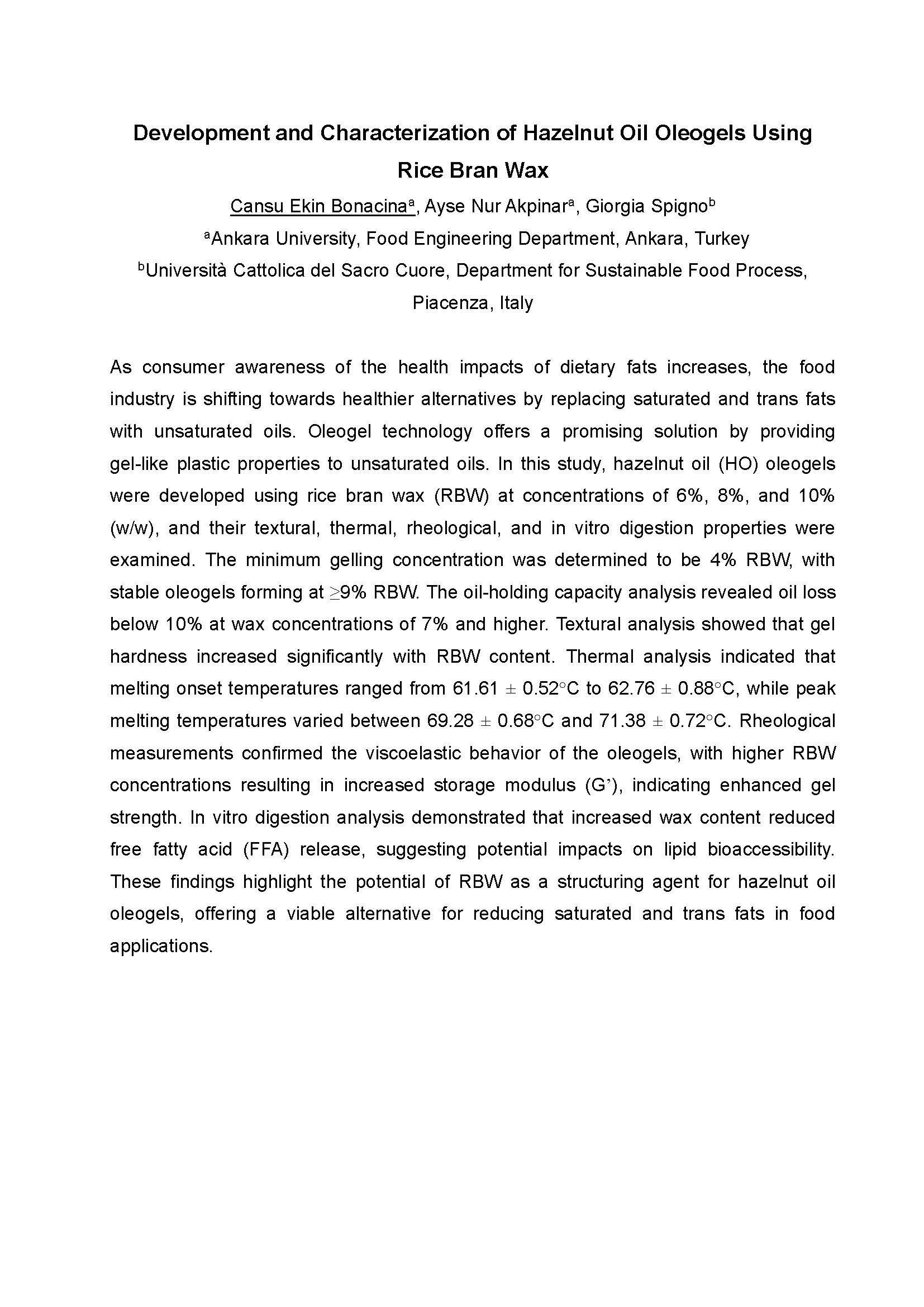As consumer awareness of the health impacts of dietary fats increases, the food industry is shifting towards healthier alternatives by replacing saturated and trans fats with unsaturated oils. Oleogel technology offers a promising solution by providing gel-like plastic properties to unsaturated oils. In this study, hazelnut oil (HO) oleogels were developed using rice bran wax (RBW) at concentrations of 6%, 8%, and 10% (w/w), and their textural, thermal, rheological, and in vitro digestion properties were examined.
The minimum gelling concentration was determined to be 4% RBW, with stable oleogels forming at ≥9% RBW. The oil-holding capacity analysis revealed oil loss below 10% at wax concentrations of 7% and higher. Textural analysis showed that gel hardness increased significantly with RBW content. Thermal analysis indicated that melting onset temperatures ranged from 61.61 ± 0.52°C to 62.76 ± 0.88°C, while peak melting temperatures varied between 69.28 ± 0.68°C and 71.38 ± 0.72°C. Rheological measurements confirmed the viscoelastic behavior of the oleogels, with higher RBW concentrations resulting in increased storage modulus (G’), indicating enhanced gel strength. In vitro digestion analysis demonstrated that increased wax content reduced free fatty acid (FFA) release, suggesting potential impacts on lipid bioaccessibility. These findings highlight the potential of RBW as a structuring agent for hazelnut oil oleogels, offering a viable alternative for reducing saturated and trans fats in food applications.
